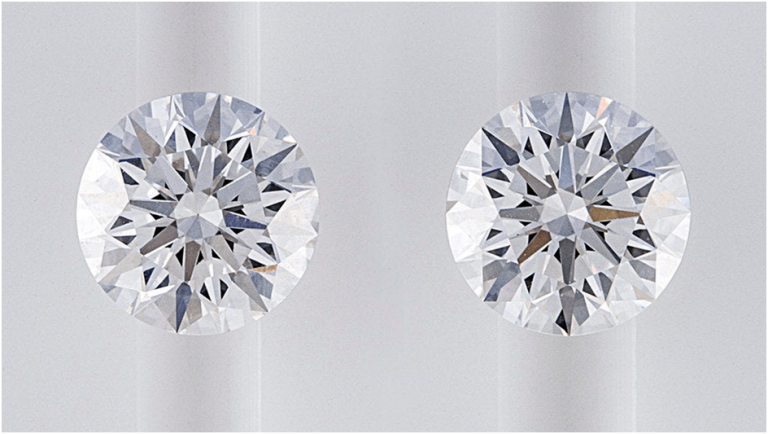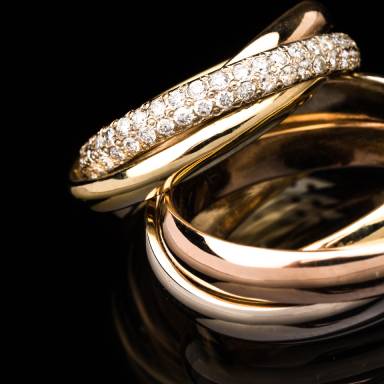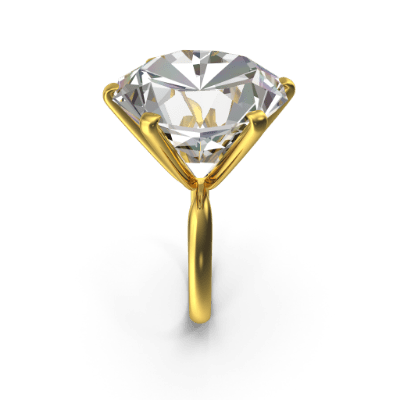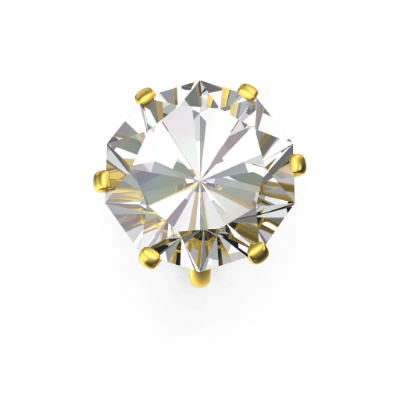
The number one question we get is “Are Lab-Grown diamonds real diamonds?” (also called man-made diamonds or lab-created diamonds while some refer them as engineered, synthetic, cultured Diamonds)
The answer is a very simple yes.
The only thing that makes a Lab-Grown diamond different from a natural diamond is its origin. A Lab-Grown diamond is “Grown” inside a lab using cutting-edge technology that replicates the natural diamond growing process. The result is a man-made diamond that is chemically, physically, and optically the same as those grown beneath the Earth’s surface.
In other wordsWe’re replicating the earth’s natural process by crystallizing carbon in a modern-day lab environment into brilliant diamonds that are priced up to 40% less, and are free of any environmental orhumanitarian concerns.
Lab-Grown diamondsare not fakes. They’re not cubic zirconias. They have all the same physical and chemical properties of a mined diamond.”
Sometimes, Lab-Grown diamonds are referred to as synthetic diamonds. While not technically inaccurate, term “synthetic” may be the reason people believe lab-created diamonds are “fake.”
If we compare them to other popular diamond simulants, it’s obvious that manufactured diamonds, are in fact, the real deal.
A Lab Grown Diamond will test as a diamond using a diamond detector – they are not the same as diamond simulants, such as cubic zirconia or moissanite.
Even Gemologists cannot tell the difference between a lab-grown diamond and an earth-grown diamond. However, most lab-grown diamonds will include an inscription on their girdle indicating that they are lab-grown, which can be seen through a loupe. If no inscription is present, a diamond can be sent to a laboratory to determine if it was lab-grown or earth-grown using advanced technology.



The U.S. government’s agency in charge of ensuring transparency and fairness in commerce and protecting consumers — the Federal Trade Commission (FTC) — has made far-reaching changes to guidelines long unfairly manipulated by the diamond mining lobby.
A six-year review of its guidelines largely followed an input that certain key guidelines dating from 1956 no longer make sense in today’s world. According to the FTC, the term ‘synthetic’ is no longer relevant given “the term is often interpreted as being ‘artificial’ when in fact man-made diamonds are not artificial.” Lab-grown diamonds may now be called gemstones, and diamond growers are allowed to market their diamonds using terms like “aboveground” and “cultured.”
Since advancements in technology have made it possible to re-create the earth’s conditions and create diamonds atomically identical to mined diamonds, the use of the words such as “synthetic” can mislead consumers as they can mistake it with “artificial.” Man-made diamonds are not synthetic.
We welcome the U.S. government taking action to ensure transparent and fair marketing.
Read More At:-
http://www.diamondworld.net/Content/FTC-Declares-Man-Made-Diamonds-as-Diamonds/16533











Scientists start the process of growing a CVD diamond by cutting a small piece of carbon, known as a seed. It is placed in a low-pressure microwave chemical vapor deposition (CVD) chamber. Gases combine with electrical energy, which ignites a plasma ball. From there a cloud forms in the chamber and carbon molecules rain on the seed. Within six to 12 weeks, a sizeable rough diamond is formed. It is then cut, polished and graded by the same world-renowned labs that certify earth-mined diamonds.
